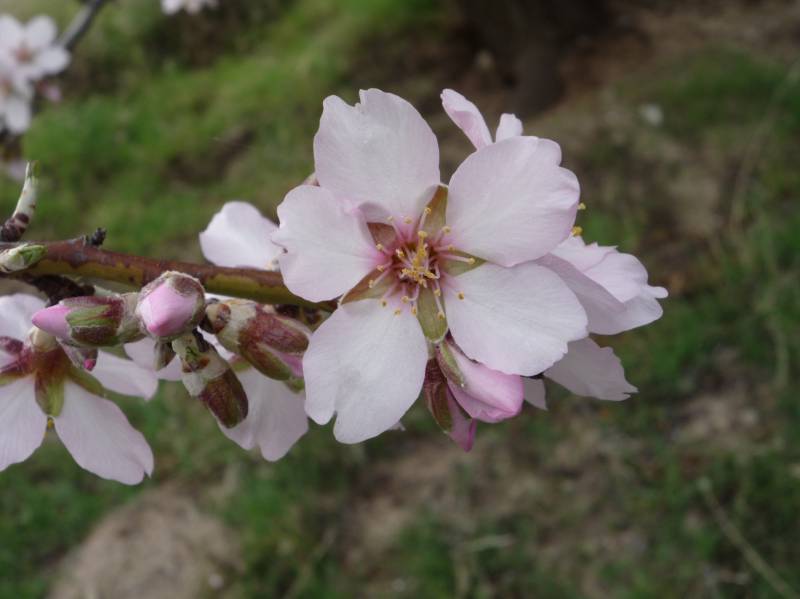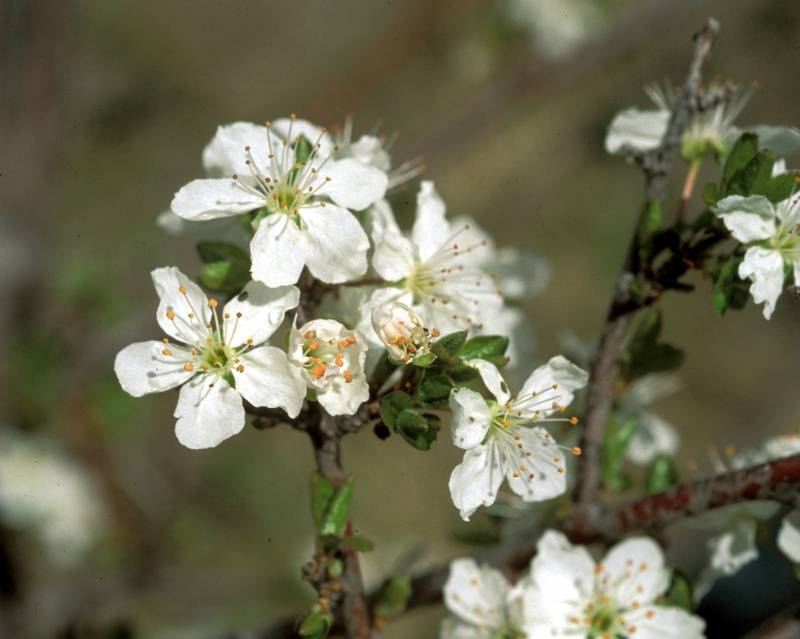Prunus dulcis
Prunus cerasifera
almond
cherry plum
Leaves alternate, oval, finely serrate, 4-7 cm. long, shiny, green or red-purple.
Flowers appearing with the leaves;
petals 5, white or pink;
stamens 20-30;
pistil 1.
Globose drupe, yellow or red.
Naturalizes from ornamental purple-leaved, pink-flowered selections.
Prunus dulcis
Prunus cerasifera
Occurring in scattered locations east of the Cascades crest and in the Columbia River Gorge in Washington; Washington, Idaho, and California.
Occurring chiefly west of the Cascades crest and in the Columbia River Gorge in Washington, but also in southeastern Washington; British Columbia to California, east to Idaho; also in northeastern North America.
- Local floras:
CA,
OR,
WA
- Local Web sites:
CalFlora,
CalPhotos,
Flora NW,
PNW Herbaria
WildflowerSearch
iNaturalist (observations)
USDA Plants Database
- LBJ Wildflower Center
- SEINet
- Plants of the World Online
- Encyclopedia of Life
- Wikipedia
- Google Image Search
- Local floras:
BC,
CA,
OR,
WA
- Local Web sites:
CalFlora,
CalPhotos,
Flora NW,
PNW Herbaria
WildflowerSearch
iNaturalist (observations)
USDA Plants Database
- LBJ Wildflower Center
- SEINet
- Plants of the World Online
- Encyclopedia of Life
- Wikipedia
- Google Image Search



